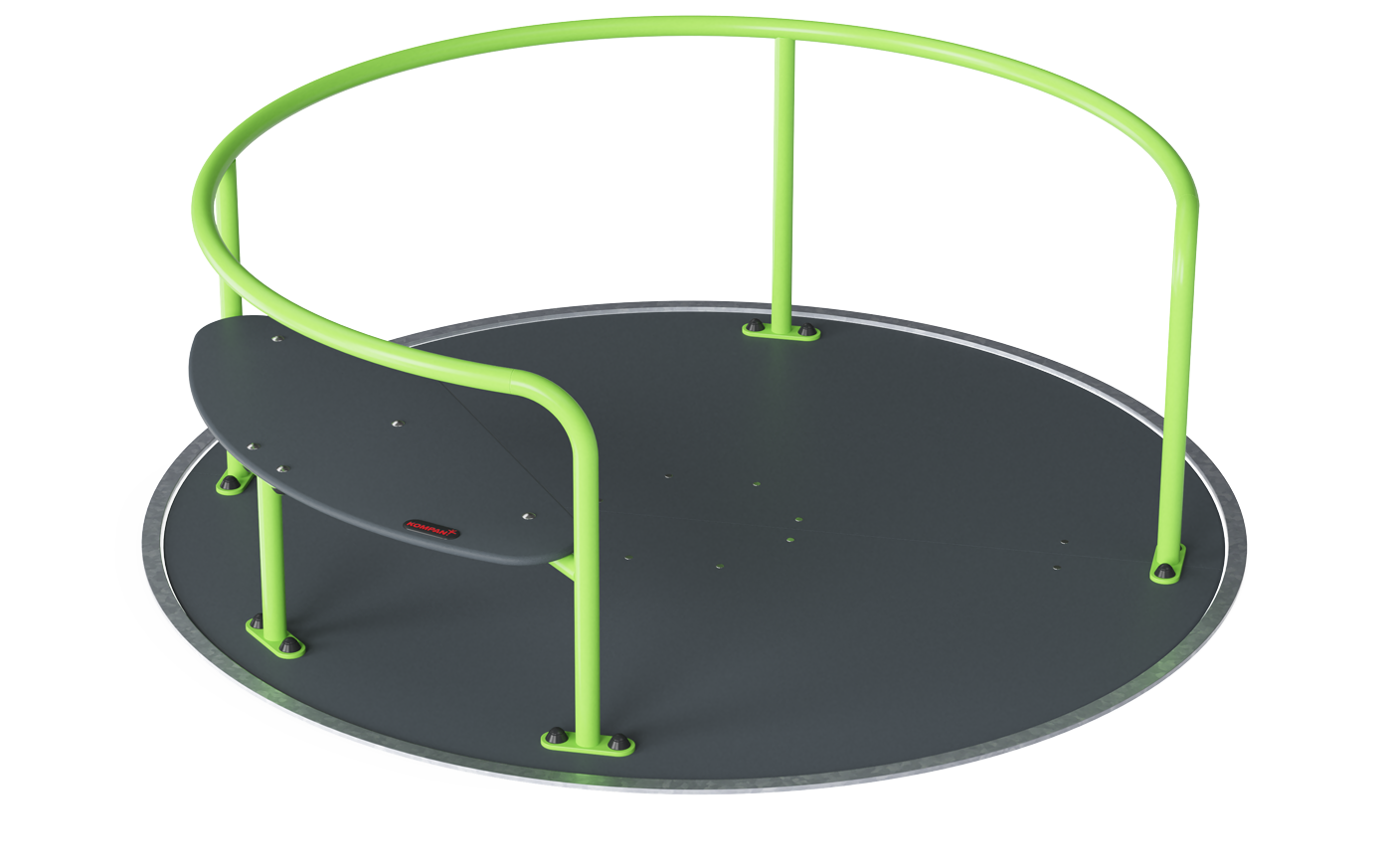
PCM157
Universal Carousel
2 - 12 Years
45 m2
8 Users
Serving the needs and abilities of a variety of playground users is how an inclusive playground lives up to its name. Everyone can’t do everything, but making sure everyone can do something is how we create equity. Our universal playground design principles will lead you through planning and designing a genuine inclusive place for play.
Our teams of play experts are here to help guide you in the right direction!

Above is an example of a large playground, but no matter the size of your inclusive playground, have the following design features in mind.
Can users get around? Start by ensuring accessibility to the playground. Plan for easy access to parking, and wide enough entries for wheelchair users to enter the playground.
Choose inclusive playground surfacing that is easy to maneuver for users we mobility difficulties. Paths with guidance are helpful and will make it possible to get around and to equipment, and navigate the overall playground.
Include quiet areas with benches and shading for caregivers and children that gets easily overstimulated to withdraw to.
Design for both social and solitary play areas. Inclusive parks should offer both thrilling, social play options, but also quiet play with sensory playground equipment.
Make sure that elevated-level and ground-level play activities are accessible and usable for users with mobility difficulties, either by a ramp structure or easy-access surfacing material. Ramp structures provide access to levels of play otherwise not reachable by, e.g., wheelchair users.
Often you can apply for to help realize your playground project.
To help the planning process, we have created an easy overview of the best practices for designing inclusive playgrounds in an inclusive play design guide. Download your free copy below.

Sensory play activities
When designing an inclusive playground, it's important to provide equal play opportunities for children with sensory or cognitive disabilities. You can do this by incorporating sensory play options throughout the playspace. This includes items with touchable and visual textures, areas with equipment for applying soothing body pressure, and other sensory experiences like outdoor musical instruments and scented plants. These features contribute to making the playground more inclusive and accessible for everyone to enjoy.

Challenging play opportunities
The key to success when planning inclusive playgrounds lies in offering a variety of play equipment. Providing options for physically challenging, thrilling, and sensory-stimulating activities, both for group and individual play, is essential for ensuring enjoyment by all. Opt for , swaying, , and that provide the physical thrill that appeals to many. and materials, visual elements, and instrumental pieces will round out the space, increasing play value and play retention.

Guiding design language
The vibrant colors of your play surface aren’t just for looks; they can help users with vision impairments and sensory disabilities navigate the playground effectively. Create signal transitions by strategically placing different textures and contrasting colors throughout your playground.
Additionally, integrating dramatic play elements, like , will help many users connect with the playground by letting their imagination transport them elsewhere!

Individual play and breaks
Taking a time out is essential to keep overstimulation or exhaustion at bay. Consider designing a seating area at some distance for children wanting some quiet time. with accessible tables and seating, along with solitary play areas with equipment designed for individual use, are also important for inclusive playground design.

Activities for social interaction

Variety in play value
An inclusive playground should offer a mix of adventurous and quiet activities, catering to diverse play preferences. It should feature both physical, social-emotional, and cognitive-creative play activities as well as areas for relaxation and retreat when needed. By doing so, you can ensure a fun and safe play space for all.
Creating equitable outdoor play opportunities should be every community’s priority because everyone (all ages, genders, nationalities and abilities) benefits by playing together.
Research shows when children with disabilities play with non-disabled children, they grow and develop their abilities and strengths, thus gaining a positive self-image.
Children with disabilities, just like all other kids, love the thrill and joy of playing with others.
Children’s physical, social-emotional, cognitive and creative development is not only supported by play, it’s developed through play.
Why Choose KOMPAN? KOMPAN’s mission of creating truly inclusive, universal playgrounds has been part of our journey since the 1980s, before the ADA was established in 1990. We have more than 50 years of experience designing play solutions for all, including children with disabilities. Over the past years, the has intensified its observation studies and revisited the core insights of universal play.
Please fill in your contact details, and we will get back to you as soon as possible.